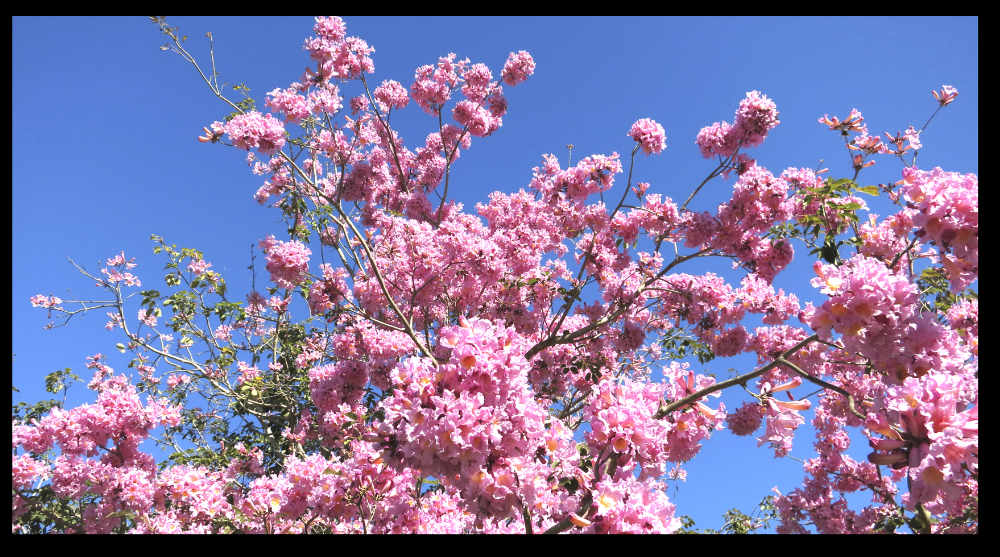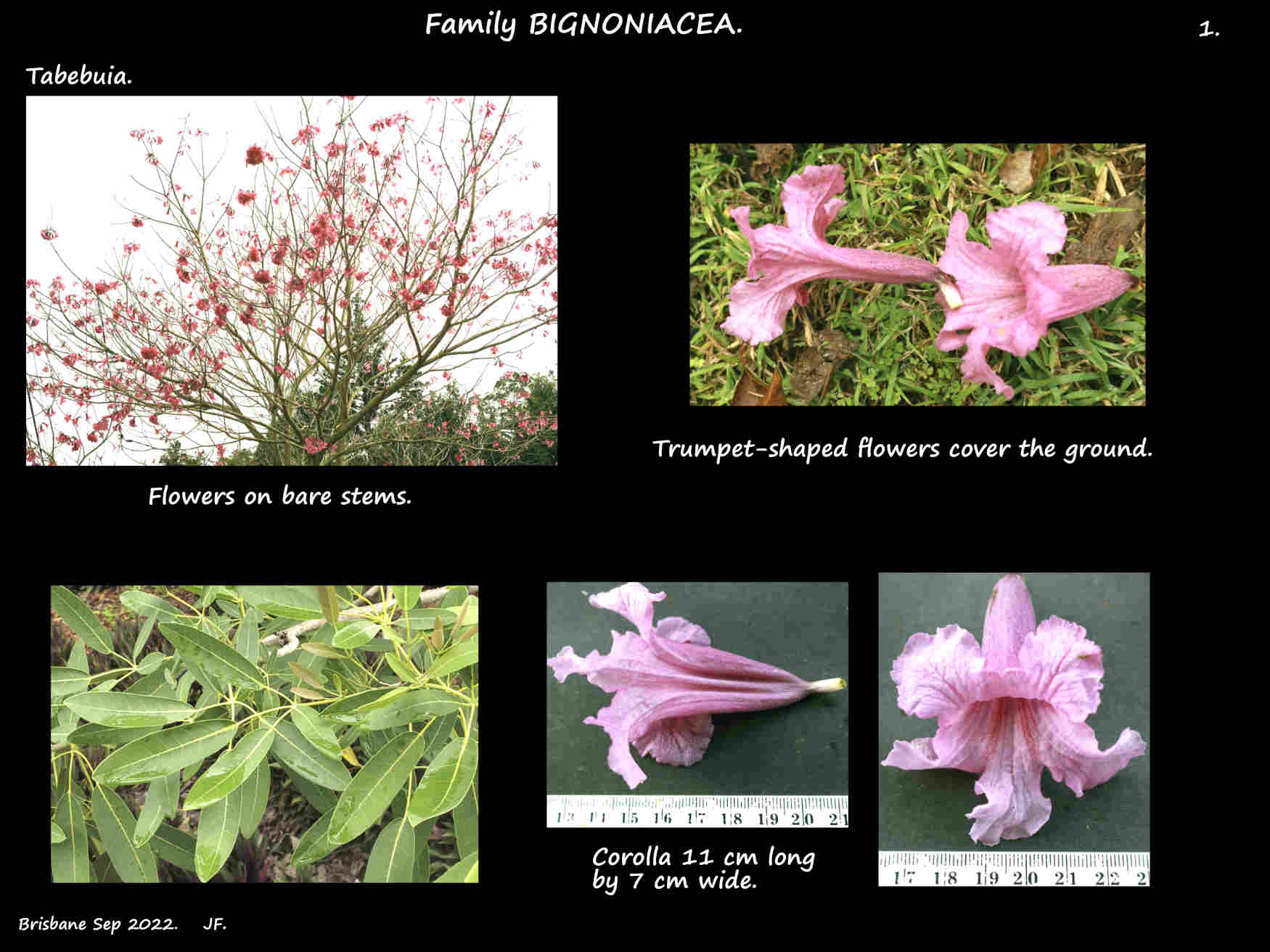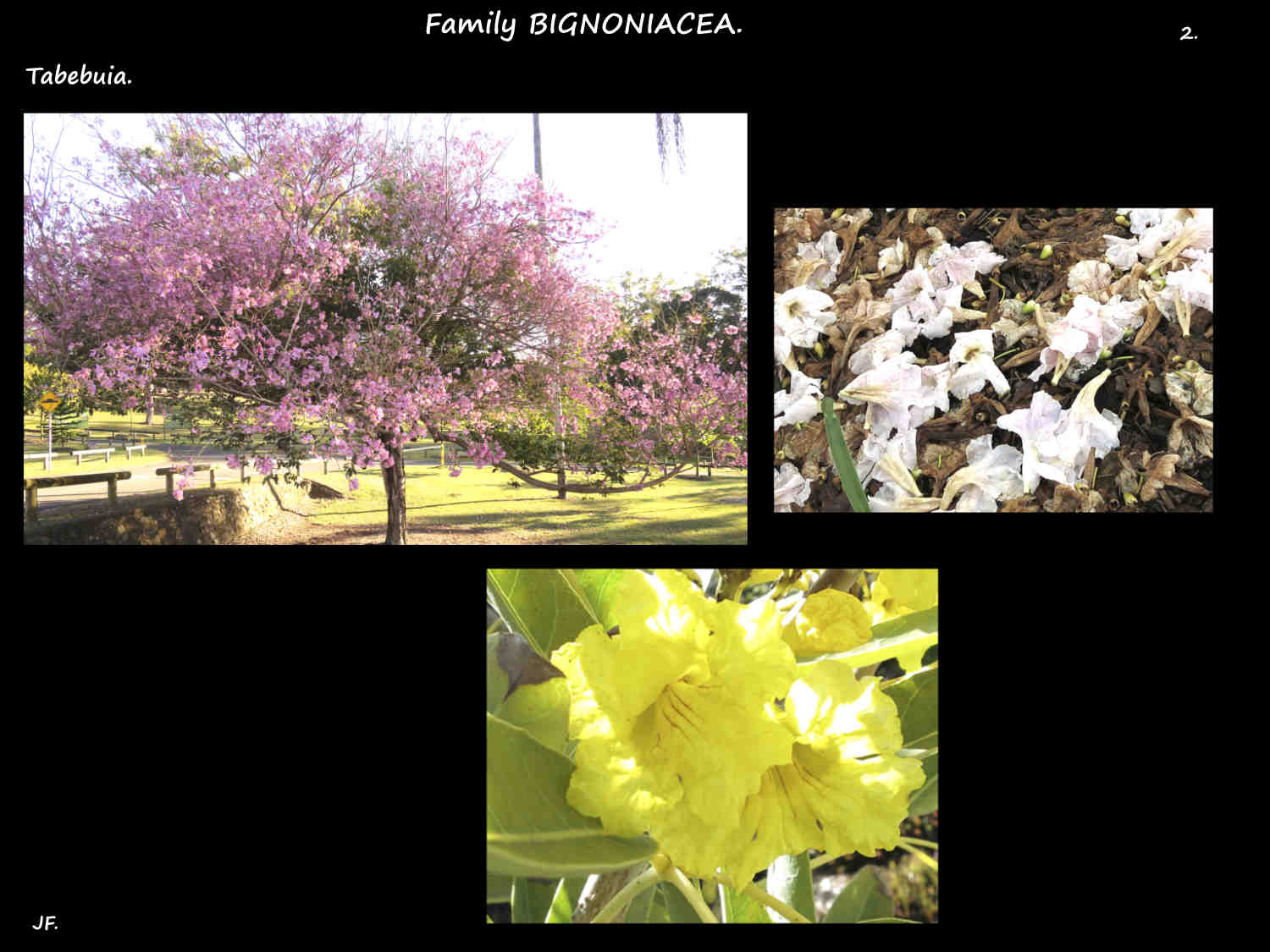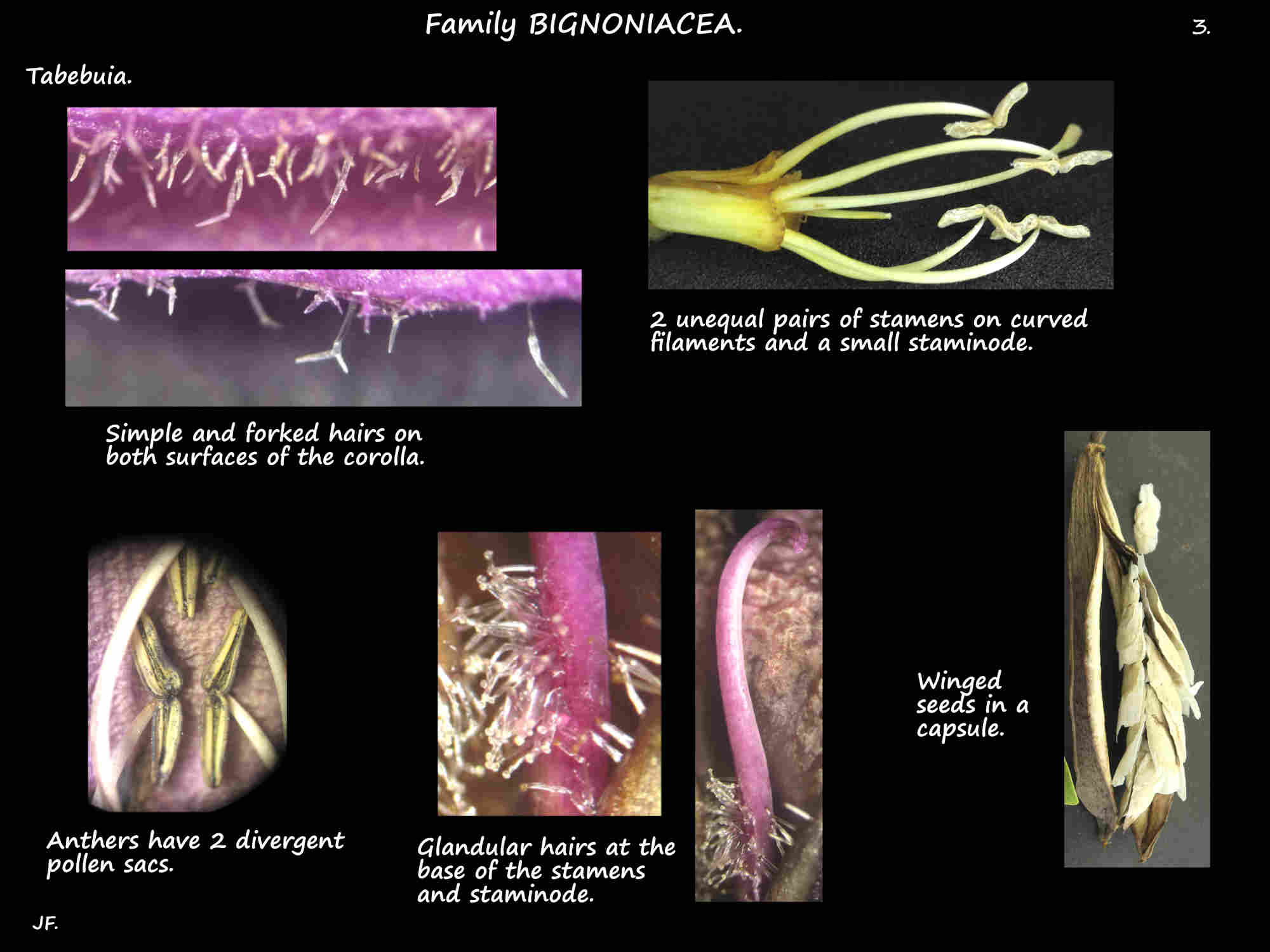Tabebuia.
Family Bignoniaceae.
There are about 100 species but only a handfull are seen in Australia.
In Brisbane they are a common street tree known as Pink or Golden Trumpet Trees.
There are many symonyms for both genus and species names.
A number of species share the same common names.
Some are very variable in appearance and all these can make identification difficult.
Most are small deciduous trees.
Young branches may have hairs.
Leaves are opposite, occasionally simple but typically compound.
There are 3 to 7 leaflets that arise from a common point – digitate or palmate.
Leaflets, on stalks, are ovate to lanceolate and may have scales.
Leaflet edges are usually smooth but may be slightly toothed.
Inflorescences are large clusters of flowers that appear on bare branches.
They branch dichotomously – each stalk branches into 2 equal ones.
The pink or green calyx is spathe-like with 2 or 3 lobes (rarely 5).
Flowers are funnel, trumpet or narrowly bell-shaped with 5 ruffled, terminal lobes.
Flowers are white, pink or yellow. The throat may be white or yellow.
The ground under the tree may be completely covered in fallen petals.
There are 2 unequal pairs of stamens and a small staminode.
There are 2 locules in the narrow ovary each with up to 3 rows of ovules.
Fruit are long, narrow, dehiscent brown capsules.
The seeds have 2 wings.
J.F.





